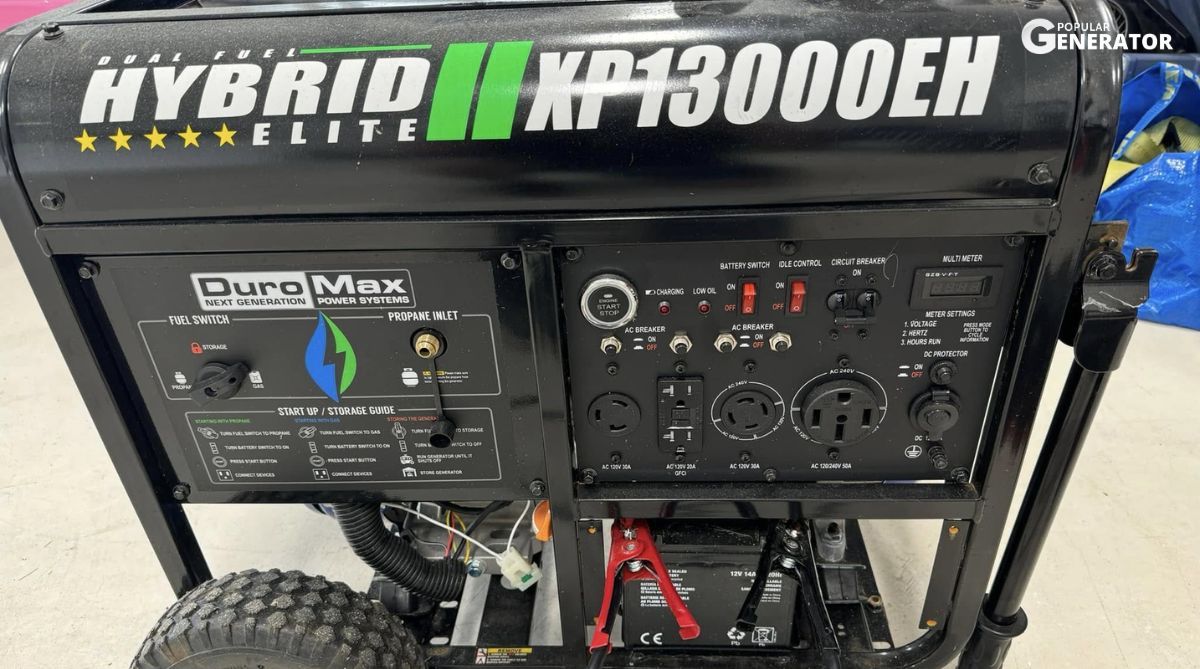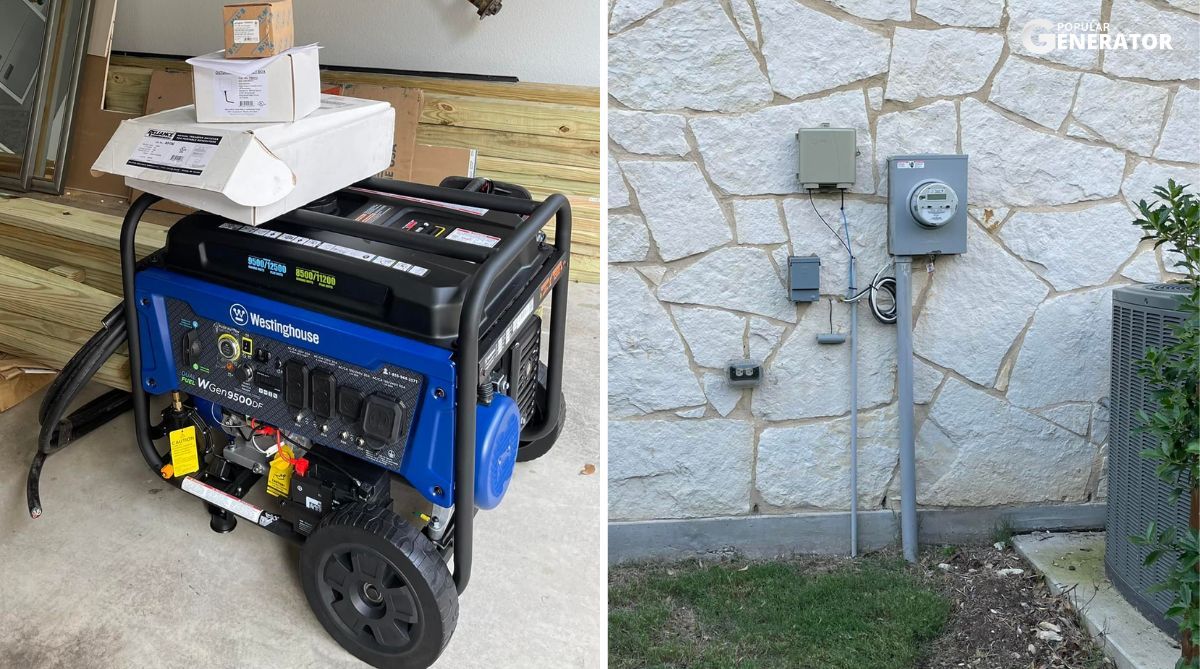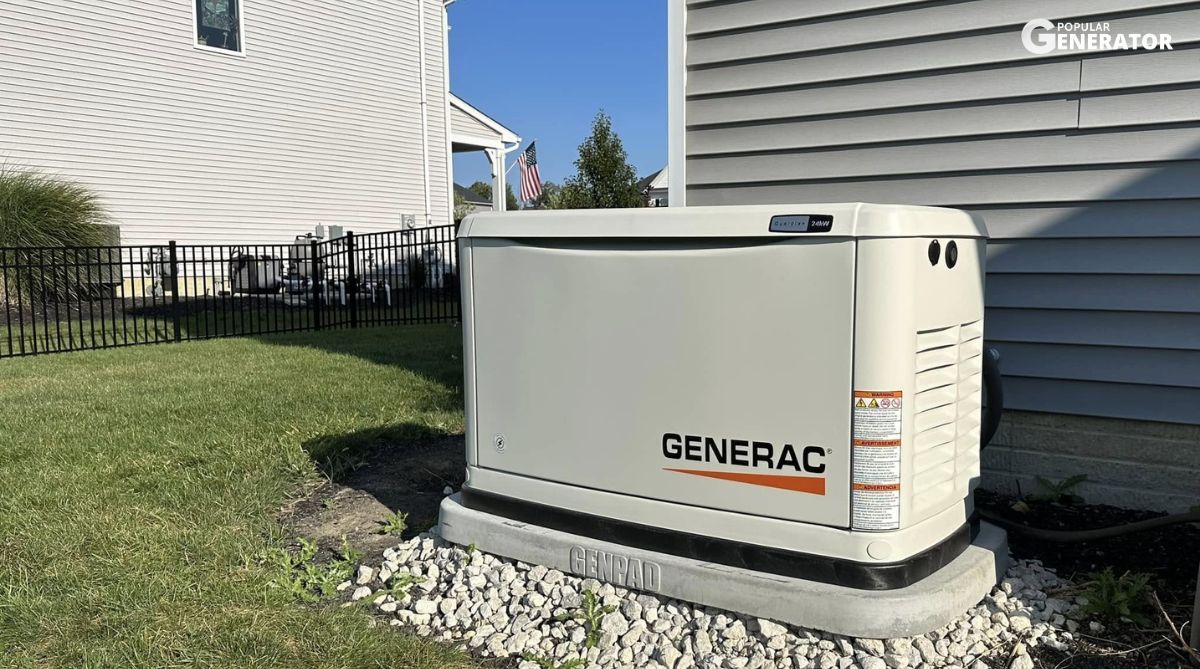Hands-On Testing: How Generators For Home Perform
After spending six months testing these five generators through multiple power outages, planned maintenance shutdowns, and simulated emergency scenarios, I've learned that finding the best generator for home use isn't about raw power alone. It's about reliability when your family needs it most.

The DuroMax XP13000EH immediately stood out during my first extended outage test, powering my entire 2,400 square foot home including the refrigerator, freezer, well pump, and central air conditioning without breaking a sweat. This dual-fuel beast delivered its promised 13,000 watts consistently, running for nearly 8 hours on a single 8.3-gallon gas tank under moderate load. The ability to switch between gasoline and propane proved invaluable during Hurricane preparations when gas stations ran dry.
See more: 9 Best Quiet Generators in 2025
However, at 224 pounds, moving this unit requires serious planning and possibly a friend's help. In contrast, the Westinghouse WGen9500DF felt more manageable at 163 pounds while still providing substantial 9,500-watt output for most household essentials.
During side-by-side testing, it couldn't handle my AC unit plus other major appliances like the DuroMax, but it comfortably ran everything else I needed during a three-day outage. The electric start worked flawlessly even after sitting unused for two months. Both units produced similar noise levels around 74 decibels, which meant conversations on my deck required raised voices but didn't disturb neighbors significantly.

The PowerSmart 4400-watt inverter generator represented a completely different approach to home backup power. Weighing just 95 pounds, I could easily move it from garage to backyard alone. The inverter technology delivered clean power perfect for sensitive electronics, and the 59-decibel operation meant I could run it overnight without disturbing anyone's sleep.
The built-in CO sensor provided peace of mind that the larger units lacked. During testing, it powered my refrigerator, freezer, lights, and Wi-Fi router for over 11 hours on 2.3 gallons of gas. The limitation became obvious when trying to add major appliances like my well pump or window AC unit, which caused immediate overload shutdowns.
See more: 9 Best Portable Generators for Camping (2025 Reviews)
The Generac Guardian 24kW standby generator transformed my entire relationship with power outages. After professional installation with the 200-amp transfer switch, outages became invisible events. The unit automatically started within 10 seconds of power loss and seamlessly powered my entire home including both AC units, electric water heater, and every outlet. The natural gas connection eliminated fuel storage concerns completely. During a five-day outage caused by an ice storm, it never missed a beat while requiring zero interaction from me. The WiFi monitoring let me check status remotely and receive maintenance alerts. The $8,000 installed cost reflected this convenience premium, but for families with medical equipment or frequent outages, the investment pays dividends in peace of mind.

The WEN 4800-watt inverter generator occupied middle ground between the PowerSmart and larger conventional units. At 99 pounds, it remained portable while offering nearly 20% more power than its smaller counterpart. The parallel connection capability meant I could link two units for 9,600 watts when needed. During testing, it handled my essential circuits plus a small window AC unit, though runtime dropped to about 7 hours under this heavier load. The ultra-quiet 56-decibel operation made it neighborhood-friendly for extended use.
Fuel efficiency testing revealed interesting patterns. The inverter units excelled during light loads, with the WEN achieving over 12 hours of runtime powering just refrigeration and lighting. The conventional generators showed their strength under heavy loads where their larger engines operated more efficiently relative to output.
After extensive real-world testing, the best generator for your home depends entirely on your specific situation. Families wanting whole-house coverage with zero hassle should seriously consider the Generac standby system despite its higher upfront cost. Those needing maximum portable power for larger homes will appreciate the DuroMax's dual-fuel capability and robust output. The Westinghouse offers an excellent middle ground for most households. For apartment dwellers or those prioritizing quiet operation, either inverter option provides reliable essentials backup without disturbing neighbors. The key is honestly assessing your actual power needs versus your budget and convenience preferences.
What to think about before buying a generator for your home
When the lights go out, a good home generator is more than just a convenience, it’s a lifeline. I’ve seen plenty of families scramble during outages, only to realize too late that the small portable unit they picked up on sale can’t keep up with the essentials. If you’re serious about keeping your house running smoothly during storms or extended blackouts, there are a few practical things you need to weigh before pulling the trigger.
How much power do you really need for your house
For a typical household, you’ll want at least 5,000 running watts if your goal is to cover the basics like fridge, freezer, lights, and Wi-Fi. If you’re aiming to keep bigger loads online, like a central air system or an electric water heater, you’ll be looking closer to the 9,000 to 12,000 watt range. I always tell people to make a list of what they actually plan to run and check the starting wattage versus running wattage. It’s the difference between a generator that keeps your sump pump humming and one that trips out the minute your furnace kicks on.
Choosing the right fuel type for long outages
Gasoline units are the most common and often the most affordable, but you’ll need to store and rotate fuel safely. Dual-fuel models that run on propane give you a longer shelf life and a cleaner burn, while natural gas units hook right into your existing line and never need a refill. In my experience, if you’re preparing for multi-day outages, having at least two fuel options is worth it. Propane can be a lifesaver when the gas stations are shut down after a storm.
Why runtime and fuel efficiency matter more than you think
A lot of generators claim long hours, but in the field I’ve seen those numbers shrink fast once you put a real load on them. Look for a unit with a decent-sized fuel tank or one that’s designed to sip fuel at partial loads. You don’t want to be refueling every few hours in the middle of the night. Some of the better models balance efficiency with auto-throttle systems that adjust engine speed depending on demand, which helps stretch fuel without sacrificing output.
Safety features that protect your family
Carbon monoxide monitoring has become standard on many newer models, and for good reason. I’ve seen too many close calls from people running a generator in a garage or too close to the house. Look for automatic shutoff sensors and always plan for safe placement outdoors with plenty of ventilation.
Conclusion
Finding the best generator for home use comes down to matching your family's actual power needs with a reliable unit that starts when you need it most. Whether you choose a dual-fuel portable or invest in a standby system, the right generator transforms stressful outages into minor inconveniences.
FAQs
How big of a generator do I actually need for my house?
This depends on what you absolutely need to keep running during an outage. For most families, a 7,000 to 10,000-watt generator handles the essentials beautifully. That covers your refrigerator, freezer, several lights, your Wi-Fi router, and maybe a window AC unit or space heater.
I always tell people to make two lists: "must have" items like your fridge and medical equipment, and "nice to have" items like your big screen TV. Add up the running watts for your must-haves, then check the starting watts for anything with a motor. Your refrigerator might only use 700 watts running, but it needs 2,100 watts to start up. Once you have that number, add 20% as a safety buffer.
Will my generator be too loud for my neighborhood?
Most quality home generators today run between 60-75 decibels, which is about as loud as normal conversation to a vacuum cleaner. The key is placement and choosing the right model for your situation.Inverter generators are your quietest option but cost more and typically max out around 4,000 watts.
For larger capacity, look for models with good sound enclosures. I've found that placing your generator at least 20 feet from windows and using natural barriers like fences or sheds helps a lot. Some of my neighbors barely notice mine running, while others with cheaper, louder units get complaints within hours.
How long will a generator actually run on one tank of gas?
Forget those "12-hour runtime" claims you see in ads. Those numbers assume you're only using 25% of the generator's capacity, which isn't realistic when you're powering your whole house.In real-world conditions, expect about 4-6 hours per tank when running your essential appliances.
A larger fuel tank obviously helps, but it also makes the unit heavier and harder to move. I keep extra gas cans on hand, but I also learned the hard way that gas stations often close during major storms. That's why I switched to a dual-fuel model that runs on both gasoline and propane.
Should I get a portable or standby generator for my home?
For most homeowners looking for the best generator for home use, portables make more sense unless you have frequent, long outages or medical needs that require guaranteed power.Portable generators cost much less upfront and give you flexibility. You can take them camping, lend them to neighbors, or move if needed.
Standby units automatically kick in when power goes out, which is amazing, but they start around $3,000 plus installation costs that can easily double that price.If you lose power more than 3-4 times per year or have someone with medical equipment at home, a standby generator is worth considering. Otherwise, a quality portable with a transfer switch gives you most of the benefits at a fraction of the cost.

















